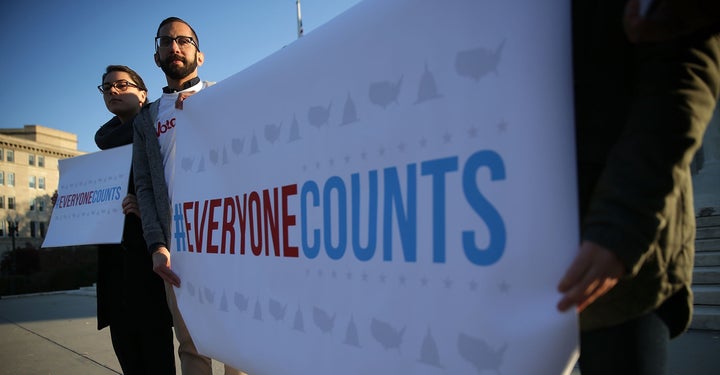
Democrats and voting rights advocates won a huge victory at the Supreme Court on Monday with a unanimous decision preserving the way state legislative districts are currently drawn.
In the case Evenwel v. Abbott, conservatives in Texas argued that the votes of eligible voters -- like themselves -- are unconstitutionally diluted because their state counts nonvoters when drawing its legislative districts. Specifically, Texas uses total population data, which includes children, inmates, disenfranchised ex-felons, noncitizen immigrants and others who are unable to vote.
The appellants, backed by the activist nonprofit Project on Fair Representation, argued the state should be prohibited from drawing districts in the manner that it currently does. They proposed that the state should instead be required to draw districts by considering the total number of eligible voters or registered voters in a given area. A three-judge panel of a district court in Texas ruled against them in 2014, so they took their case to the Supreme Court, which heard oral arguments in December.
A decision in the appellants’ favor would have shifted political power away from urban, younger, more Latino and therefore more Democratic-leaning areas toward rural, older, more white and therefore more Republican-leaning regions of the state. An analysis by the Brennan Center for Justice in December found that a ruling in favor of the appellants would upend every state’s electoral map, rendering them “presumptively unconstitutional” and in need of redrawing.
But all eight Supreme Court justices decided to preserve the status quo Monday. Justices Clarence Thomas and Samuel Alito agreed with the outcome of the case, but wrote separate concurring opinions to lay out different reasons for their votes.
“As constitutional history, precedent, and practice demonstrate, a State or locality may draw its legislative districts based on total population,” Justice Ruth Bader Ginsburg wrote for the court's majority.
“The Framers recognized that use of a total-population baseline served the principle of representational equality,” Ginsburg continued, arguing that state legislators should be responsive to the concerns of all of their constituents, not just those who can vote.
“Adopting voter-eligible apportionment as constitutional command would upset a well-functioning approach to districting that all 50 States and countless local jurisdictions have long followed. ... Nonvoters have an important stake in many policy debates and in receiving constituent services," she explained. "By ensuring that each representative is subject to requests and suggestions from the same number of constituents, total-population apportionment promotes equitable and effective representation.”
While the appellants’ case was considered a long shot because it would require states to draw their districts using datasets that do not actually exist, voting rights experts had feared that the court would open the door to Texas’ suggestion that states may choose to use other metrics to draw their lines, like eligible voter or registered voter data.
The court said it didn’t have to answer that question.
“Because constitutional history, precedent, and practice reveal the infirmity of [the] appellants’ claim, this Court need not resolve whether, as Texas now argues, States may draw districts to equalize voter eligible population rather than total population,” Ginsburg concluded.
Kristen Clarke, president and executive director of the Lawyers’ Committee for Civil Rights Under Law, commended the justices for maintaining "the fundamental principle of one person, one vote."
“We applaud the Supreme Court for unanimously upholding one of the most basic principles in American democracy – that every person counts when it comes to ensuring fair and equal representation in the redistricting process,” Clarke said. “Today’s decision renders null and void efforts to marginalize minority communities from having an equal seat at the table in our political process.”
Democratic presidential candidates Hillary Clinton and Sen. Bernie Sanders (I-Vt.) also expressed support for the court's ruling.
Before considering this case, the Supreme Court had never specifically addressed whether state legislative districts should have roughly the same number of people or the same number of eligible voters. The 14th Amendment says that the census must count “the whole number of persons in each State” every 10 years for the purpose of apportioning seats in the U.S. House of Representatives. But it does not explicitly address how to draw state legislative districts. Federal courts have consistently ruled that using total population to draw the districts is acceptable.
The Evenwel case was brought by the same conservative advocate, Edward Blum, who was behind Shelby County v. Holder, which allowed the Supreme Court’s then-five conservative justices to justify gutting the Voting Rights Act in 2013.
"We are disappointed that the justices were unwilling to re-establish the original principle of one-person, one-vote for the citizens of Texas and elsewhere," Blum said in a statement.

